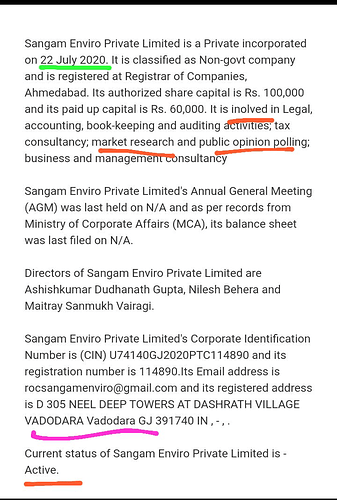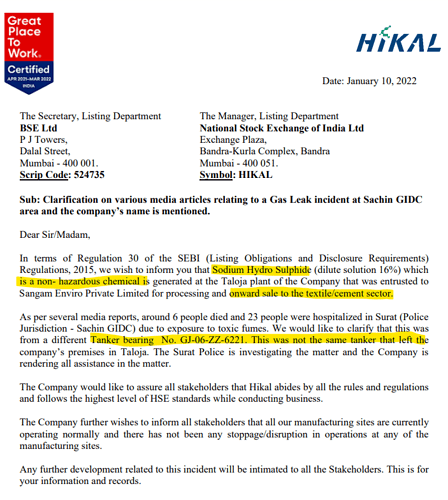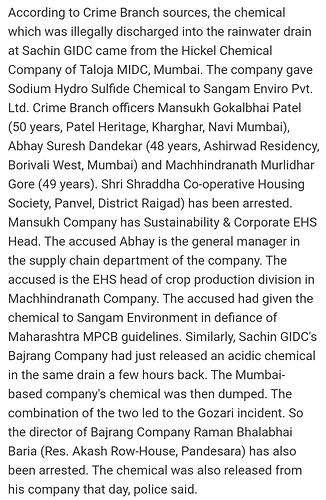The company’s version is that firstly the material was not hazardous and secondly, it was not the same truck that had left the factory.
These days every manufacturer even mid sized has CCTV cameras installed in their factory gates and at important points which track every truck moving in and out and clearly capture the truck numbers. Also the time when the finished goods/byproduct/waste/scrap has left the factory and inputs have come into the factory is also recorded. This is mainly done from GST/customs perspective.
A company may purchase raw materials from 1000s of vendors and suppose on investigation at one of the vendors end it is found out that the said vendor only issues bills/invoices without actually supplying the materials, then the GST department issues notices to all the purchasers claiming that every invoice basis which the buyers have taken input stage credit is fake as it is only invoice that is received and no actual receipt of goods. Therefore, this shifts the burden on the companies which have taken credit to prove that they have received not just and invoice but also the goods. This is where the CCTV cameras/ photographs of materials loaded, unloaded etc., comes to their rescue to build evidence in their favour.
Therefore, when a company says it not the same truck, mind you they know what they are speaking and they all the evidences to support it. Here no court can prosecute a company/promoter as it has direct/primary evidence in its support. Finally we must understand that the Court goes on facts and evidence and not on morality.
The Supreme Court has laid down several principles in its judgements, which casts certain responsibility on the industries such as polluter pays, vicarious liability etc. These are broad principles laid down in a public interest litigation (popularly called as PILs). A public spirited citizen can go to the Supreme Court and say look the environment where I live is being polluted by theses industries and under the constitution I have a fundamental right to live. The Government by giving permission to these industries to operate is acting against my fundamental rights. The Court in this context has laid down the principles that the industries owe a sense of responsibility to the environment etc., and directs the Government to make strict laws/ stringent regulations which protects the environment etc.
So, if we see most of these judgements of the Supreme Court they are of the 1980s/1990s when there were not many regulations. It is because of the judicial activism today we have these regulations like hazardous waste management rules etc.
Therefore, at this stage its only speculation what we are doing. What does the investigation say? which law they have violated and what is the punishment under the criminal law when the fault is of the contractor? to what extent the manufacturer also can be held liable for engaging the contractor who does not have license? is it that the contractor did not have license or his license was lapsed/not renewed? The company has evidence that the goods are not only not hazardous but also the truck which carried it was different. so how it cant be the truth? Its a very long drawn process.
In my view, there seems to be a lapse on their part in keeping proper check over the contractor (i.e. when the license expires? was it renewed etc.)
Several companies which handle hazardous materials do go through this and its nothing new. See jubilant ingrevia and Deepak Nitrite history.
In the end what is morally wrong need not be legally wrong.



